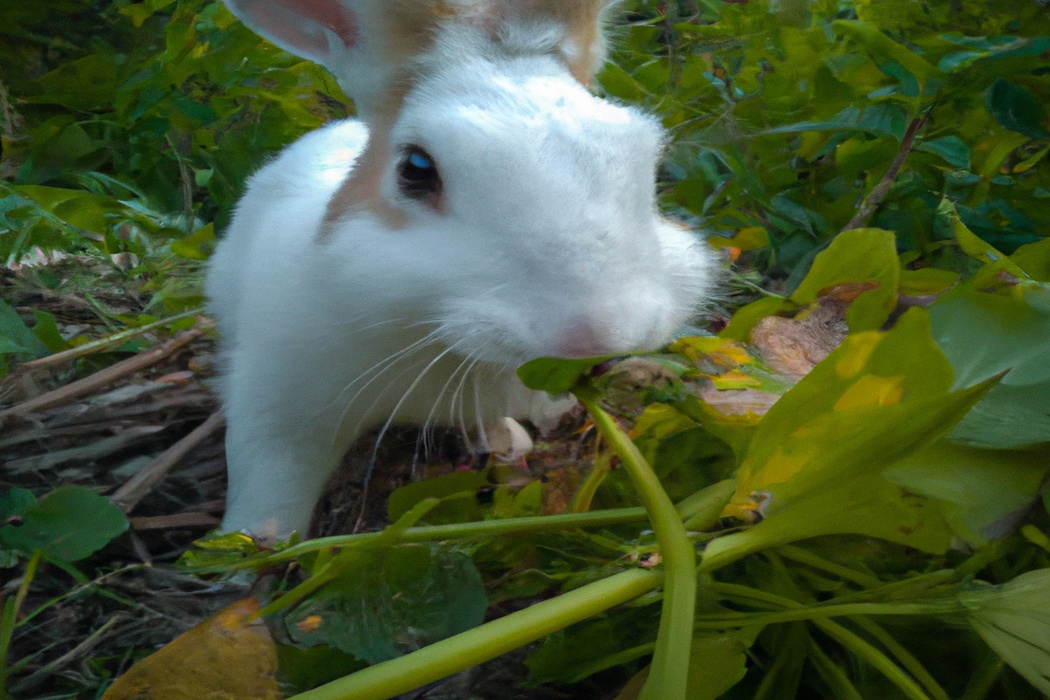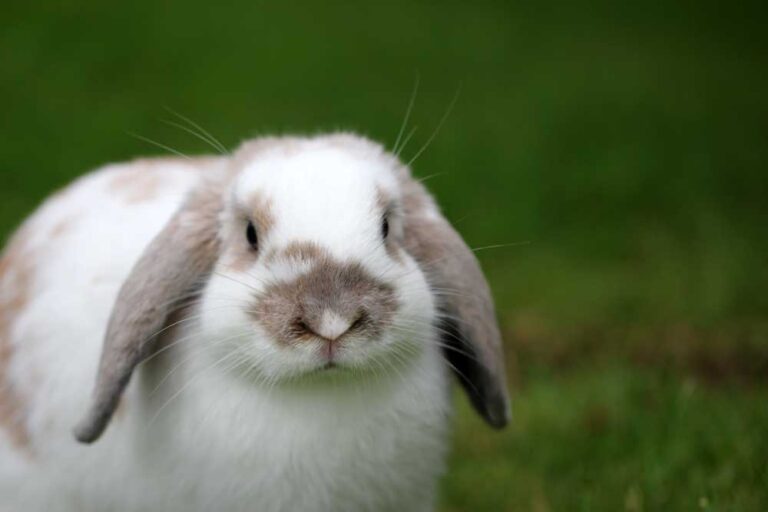Can Rabbits And Chinchillas Live Together – The Perfect Pair
Key Takeaways:
- Rabbits and chinchillas can live together as long as they are properly introduced.
- Both rabbits and chinchillas have different social needs that must be met for successful cohabitation.
- A spacious and properly designed living environment is essential for the well-being of rabbits and chinchillas.
- Regular monitoring and supervision is necessary to ensure the safety and compatibility of rabbits and chinchillas living together.
Are you considering adding a fluffy rabbit and an adorable chinchilla to your furry family?
Well, you’re not alone! Many pet lovers are drawn to the idea of housing rabbits and chinchillas together due to their similar appearances and charming personalities.
But before you jump right into it, it’s crucial to understand the nature of these animals, the challenges they may face living together, and the factors to consider when creating a suitable environment.
In this article, we’ll explore the possibilities of housing rabbits and chinchillas together, along with some helpful tips for a successful introduction.
So, let’s dive in and find out if these two furry friends can truly live harmoniously under one roof!
| Rabbits | Chinchillas |
| Species | Various breeds (Lop, Dutch, etc.) |
| Habitat | Hutches, cages or pens |
| Social Behavior | Tend to be territorial and prefer their own kind |
| Compatibility | May not get along well, risk of aggressiveness and fighting |
| Size | Medium to large-sized |
| Activity level | Active and playful |
| Diet | Hay, fresh vegetables, pellets |
| Grooming | Require regular grooming, especially Angora breeds |
| Communication | Non-verbal cues, thumping, grunting |
Can Rabbits and Chinchillas Live Together?
Can rabbits and chinchillas coexist?
Let’s find out.
Understanding the Nature of Rabbits and Chinchillas
Rabbits and chinchillas have distinct natural behaviors and needs.
Rabbits are social animals that thrive on companionship, while chinchillas are generally solitary.
Rabbits enjoy hopping, digging, and chewing on things, so they need a spacious enclosure with plenty of toys and opportunities for exercise.
Chinchillas are active climbers and jumpers, so they require a tall cage with platforms and tunnels.
Both animals have specific dietary requirements, with rabbits needing more vegetables and chinchillas relying on a diet of hay, pellets, and occasional treats.
Understanding their nature will help you provide the appropriate care and environment for each pet.
The Challenges of Keeping Rabbits and Chinchillas Together
Keeping rabbits and chinchillas together can be challenging due to their different dietary and social needs. Rabbits have a high fiber diet, while chinchillas require a specialized, low-fiber diet.
Additionally, rabbits are social animals and thrive in groups, while chinchillas are solitary by nature.
The two species may not communicate or interact effectively, leading to stress or potential harm. It’s recommended to provide separate enclosures for each animal to ensure their individual needs are met.

Factors to Consider Before Housing Rabbits and Chinchillas Together
Before deciding to house rabbits and chinchillas together, there are several factors to consider.
- Size and Space: Ensure that you have a large enough living space to accommodate both animals comfortably. Rabbits and chinchillas each require their own designated areas with adequate room to exercise, play, and retreat.
- Behavior and Temperament: Rabbits can be territorial and may not get along with a chinchilla or vice versa. It’s important to observe their behavior and ensure they can coexist peacefully before introducing them.
- Diet and Nutrition: Rabbits and chinchillas have different dietary needs. Their food should not be mixed as it can lead to health problems. Make sure you can provide appropriate and separate diets for each animal.
- Health and Hygiene: Both rabbits and chinchillas are prone to certain health issues. Before housing them together, ensure that both animals are healthy and up to date on vaccinations. Regular cleaning and hygiene practices are also crucial to prevent the spread of diseases.
- Supervision and Interaction: It’s essential to closely supervise any interaction between rabbits and chinchillas to prevent any potential harm or stress. Provide separate spaces for each animal and give them the opportunity for individual playtime and interaction with their own kind.
Remember, not all rabbits and chinchillas will be compatible as roommates. Each animal has its own unique needs and personality, so it’s important to assess their compatibility, provide appropriate housing and care, and be prepared to separate them if necessary.

Preparing a Suitable Environment for Rabbits and Chinchillas
To create a suitable environment for rabbits and chinchillas, there are a few key factors to consider. First, provide a spacious cage or hutch with plenty of room for both animals to move around comfortably.
Ensure the cage has separate areas for each pet to retreat to when needed.
Next, provide the appropriate bedding material, such as hay or paper-based bedding, for comfort and hygiene. Additionally, rabbits and chinchillas need regular access to fresh hay, as well as a balanced diet consisting of pellets and fresh vegetables.
Finally, make sure the environment is kept at a suitable temperature and humidity level to ensure the well-being of both animals.
Introducing Rabbits and Chinchillas to Each Other
Introducing rabbits and chinchillas to each other can be a delicate process. It’s important to do it cautiously to ensure their safety and well-being.
Start by giving them separate living spaces where they can see and smell each other without direct contact.
Slowly allow supervised interactions, closely monitoring their behavior for signs of aggression or stress. Gradually increase their time together as they become more comfortable.
Remember, each animal has its own unique personality, so take it slow and give them time to adjust.

Frequently Asked Questions about Housing Rabbits and Chinchillas Together
Q1: Is it safe to house rabbits and chinchillas together?
Yes, it is generally safe to house rabbits and chinchillas together. However, there are a few important factors to consider.
Both rabbits and chinchillas have specific dietary needs, so make sure their food is appropriate for each species.
Also, provide separate sleeping areas and toys to prevent any potential conflicts. Furthermore, always monitor their interactions closely to ensure they get along well.
Safety should always be a top priority when housing different species together.
Q2: What are the risks of keeping rabbits and chinchillas in the same enclosure?
Keeping rabbits and chinchillas in the same enclosure can be risky due to their different dietary requirements, territorial behavior, and potential for injury.
Rabbits have specialized diets that can cause digestive issues in chinchillas if shared.
Additionally, chinchillas are known to be territorial and may become aggressive towards rabbits.
Their size difference can also lead to accidental injury.
It’s important to provide separate housing to ensure the safety and well-being of both animals.
Q3: Can rabbits and chinchillas interact and play together?
Yes, rabbits and chinchillas can interact and play together. They can engage in activities like chasing, running, and exploring together.
However, it’s important to introduce them gradually and under supervision to ensure their safety.
Make sure to provide enough space and plenty of hiding spots for both animals. Always monitor their interactions to prevent any potential aggression or harm.
Q4: How can I ensure a successful introduction between a rabbit and a chinchilla?
When introducing a rabbit and a chinchilla, it’s important to take it slow.
Start by allowing them to see and smell each other through a closed barrier, like a cage or gate.
Gradually increase their interactions by providing supervised playdates in a neutral space.
Watch for any signs of aggression or stress, and separate them if necessary.
Provide separate living spaces and resources to prevent territorial issues.
Patience and careful monitoring are key to a successful introduction between a rabbit and a chinchilla.
Final Verdict
While rabbits and chinchillas may seem like compatible companions, it is not advisable to house them together.
Rabbits have different dietary needs and can transmit diseases to chinchillas, which are more susceptible to illness.
Additionally, their different behavior and communication styles may lead to conflicts, stress, and even injury.
If you want to keep both animals, it is best to provide separate enclosures and supervised, controlled interactions.
Ensuring a safe and suitable environment for each pet will promote their well-being and minimize potential risks.








